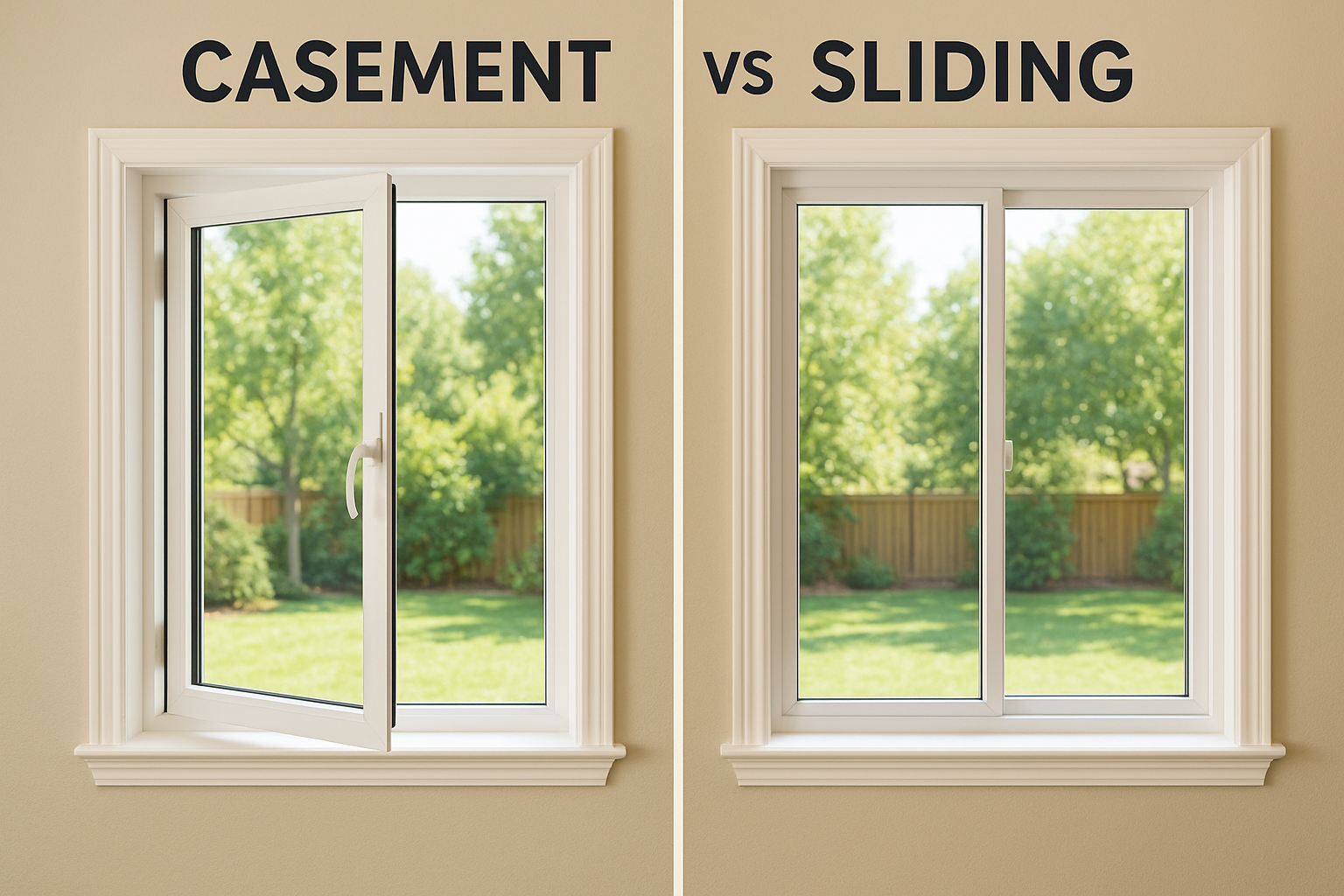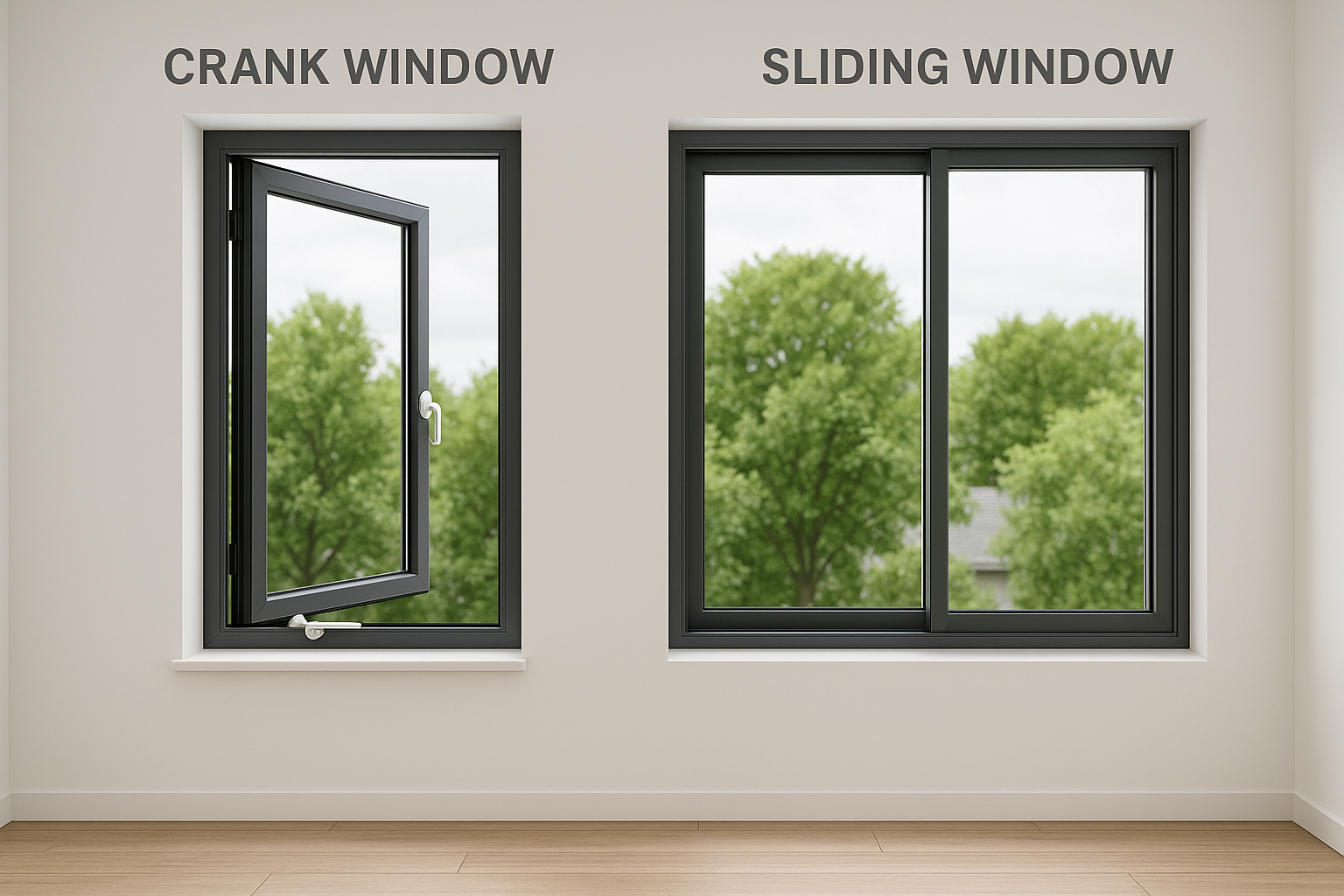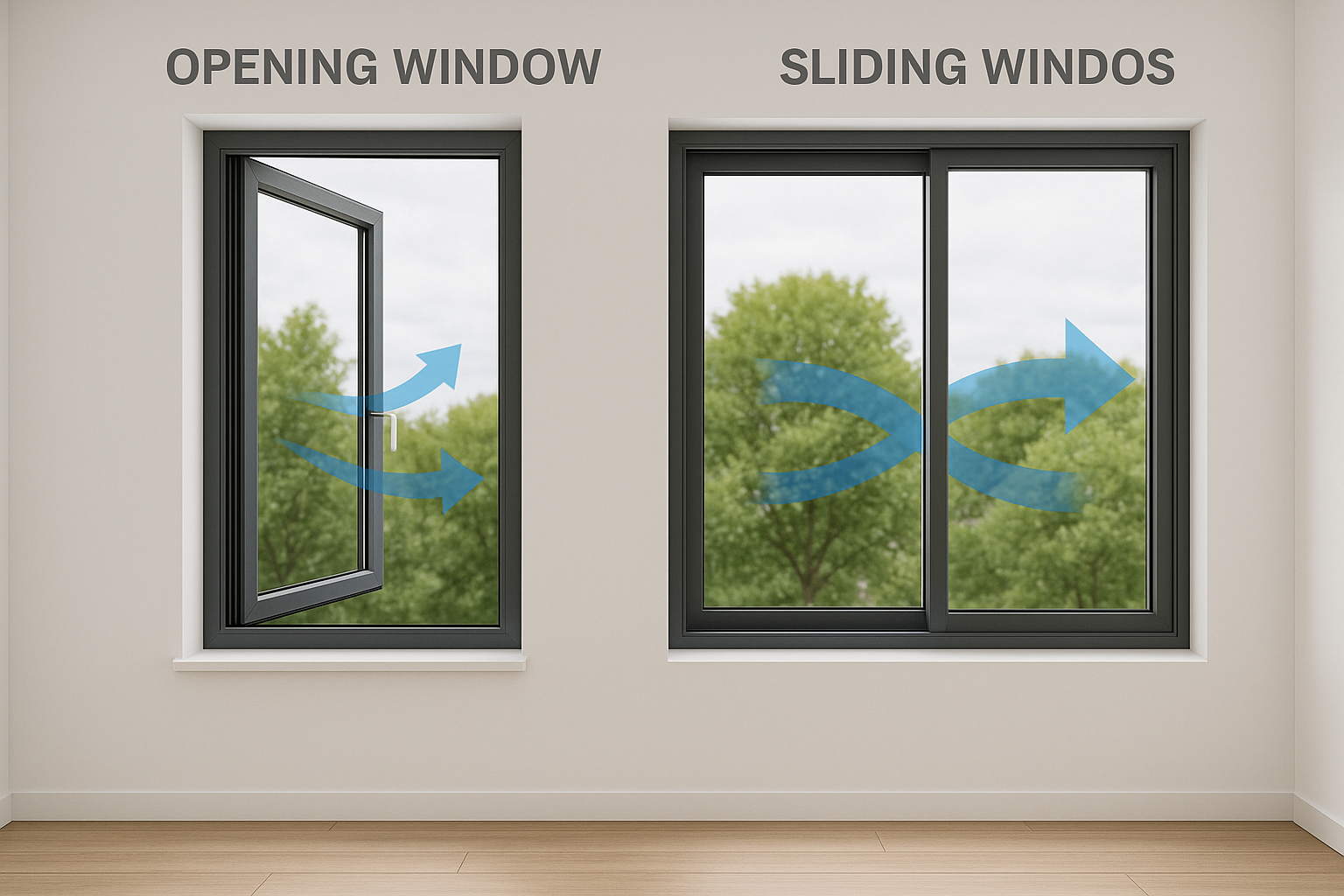Torn between casement and sliding windows? The wrong choice can impact ventilation, energy costs, and daily comfort—especially if you're dealing with extreme weather or tight spaces.
Casement windows offer better energy efficiency, full ventilation, and tighter sealing, while sliding windows are more affordable, easier to maintain, and better for wide spaces or limited exterior clearance.

Each window type has strengths and trade-offs, and I've guided many clients through this decision. Let’s dive into what matters most—so you can choose with confidence.
Which is better, sliding or casement windows?
Stuck between function and budget? Many clients are unsure which window type performs better or adds more value to their space.
Casement windows are better for insulation, airflow, and security, while sliding windows are ideal for wide openings, ease of use, and budget-friendly installations.

Comparing Performance and Practical Use
Here’s a side-by-side comparison to help clarify the key performance differences.
| Feature | Casement Windows | Sliding Windows |
|---|---|---|
| Ventilation | Full, directional airflow | Partial (50% opening) |
| Energy Efficiency[^1] | High, due to tight seal | Moderate, may allow air leaks |
| Maintenance[^2] | Moderate, crank hardware | Low, simple track system |
| Cost | Higher | Lower |
| Space Requirement | Needs exterior clearance | Fits tight exterior conditions |
| Aesthetic | Traditional to modern | Sleek, minimalistic |
| Security | Strong multi-point locks | Latch-based, less secure |
| Best Application | Bedrooms, kitchens, high walls | Basements, wide openings |
Each project has its own needs. That’s why I often ask clients: is it airflow, savings, or space optimization that matters most?
What are the downsides of casement windows?
Clients love the airflow and insulation, but some drawbacks become clear after installation—especially in urban or tight exterior spaces.
Casement windows require more maintenance, have higher costs, need outward clearance, and can suffer from mechanical failures or wind damage if left open.

Understanding Limitations of Casement Windows
Casement windows[^3], while strong in performance, are not always a fit for every situation. The crank mechanism and hinges are prone to rust or failure without maintenance. They open outward, which can interfere with walkways, patios, or nearby trees. This makes them less suitable for crowded spaces like apartment buildings or urban balconies.
Cost is another issue. Because of the multi-point locking system[^4] and reinforced sealing, the unit cost is higher—sometimes up to double the price of a slider. And although they seal tightly, the hardware can jam over time or feel stiff to operate.
In windy areas, there's also the risk of damage. If left open, strong gusts can slam the sash or damage the hinges. For clients who don’t want regular maintenance or have tight exteriors, these can become real concerns.
Are crank windows better than sliders?
Crank windows (casements) offer a refined experience and high performance—but does that justify the extra cost?
Crank windows outperform sliders in sealing, insulation, and ventilation, but sliders win in simplicity, space-saving design, and affordability.

What Makes a Crank Window Different?
Crank windows use a lever mechanism to open outward, offering a full opening and a tight seal when closed. This design makes them among the best for thermal performance[^5]. The crank allows easy operation—even when the window is tall or hard to reach—making them great for over sinks or counters.
Sliders, on the other hand, move horizontally on a track. This makes them easy to install, cheaper to build, and faster to operate. There’s no need for clearance outside the building, which is perfect for tight exteriors.
However, sliders don’t seal as well. Their tracks collect debris, and over time, the seals can wear out. Casement windows avoid this with compression seals and tighter locks. That’s why I usually recommend crank windows[^6] for areas where energy loss is a concern or where airflow matters more.
Which window is best, sliding or opening?
Some people want a modern look. Others need efficiency. Choosing the right window style isn’t about what’s “best”—it’s about what fits.
Opening (casement) windows are best for tight seals and strong airflow; sliding windows are best for wide areas and simple, cost-effective installs.
%(Side-by-side Install of Casement and Sliding Windows)[https://placehold.co/600x400 "Side-by-side Install of Casement and Sliding Windows"]
Picking the Best Fit for Your Space
“Best” changes depending on the project. For example, in cold climates like Canada or Northern Europe, I often recommend casement windows. They close tighter, reducing heat loss and keeping homes warm in winter. For homeowners who want maximum ventilation in kitchens or bathrooms, casements are also ideal.
In warmer, urban regions like Southeast Asia or the UAE, sliders often work better. They allow light, are easy to use, and don’t need outside clearance. That’s a big advantage for villas with walkways or balconies.
I always suggest weighing these factors:
| Factor | Go Casement | Go Slider |
|---|---|---|
| Energy Efficiency | ✅ Yes | ❌ No |
| Airflow/Ventilation | ✅ Excellent | ⚠️ Moderate |
| Exterior Space Available | ❌ Needs clearance | ✅ No clearance needed |
| Budget-Friendly | ❌ Higher upfront cost | ✅ Lower cost |
| Maintenance Preference | ⚠️ Some hardware upkeep | ✅ Low maintenance |
| Design Aesthetic | ✅ Classic / Timeless | ✅ Modern / Sleek |
The right choice blends performance, style, and budget. I help my clients evaluate all three before making a final call.
Conclusion
Casement windows offer strong performance and airflow, while sliding windows win on cost and simplicity. The right choice depends on your space, climate, and personal goals.
[^1]: Exploring this link will provide insights into how energy-efficient windows can save you money and enhance comfort.
[^2]: This resource will guide you on proper window maintenance, ensuring longevity and optimal performance.
[^3]: Explore this link to understand the full range of benefits and drawbacks of casement windows, helping you make an informed decision.
[^4]: Learn about the security features of multi-point locking systems to ensure your windows provide maximum safety and peace of mind.
[^5]: Understanding thermal performance can help you select energy-efficient windows, reducing energy costs and enhancing comfort.
[^6]: Explore the advantages of crank windows, including their thermal performance and ease of use, to make an informed choice for your home.
